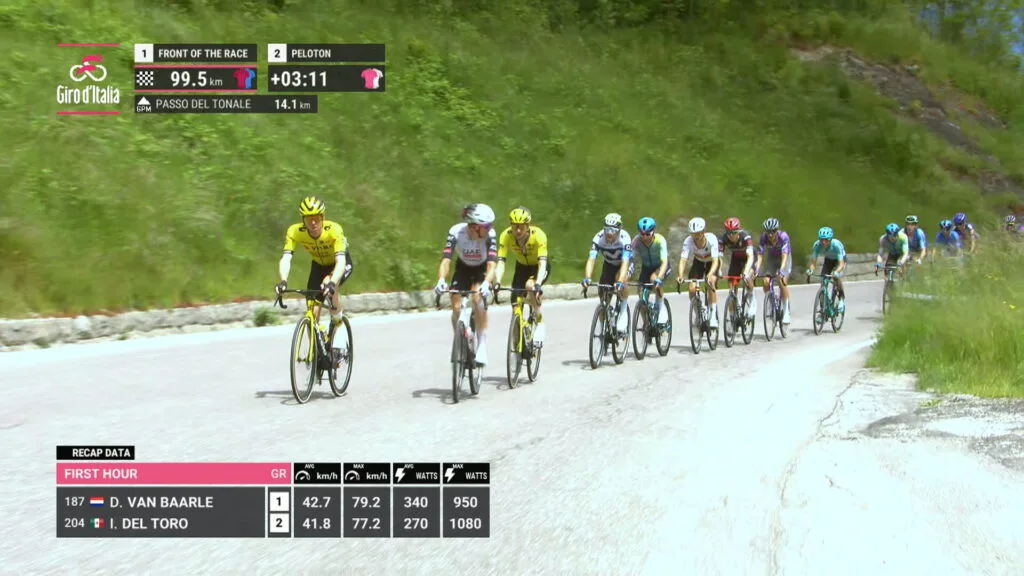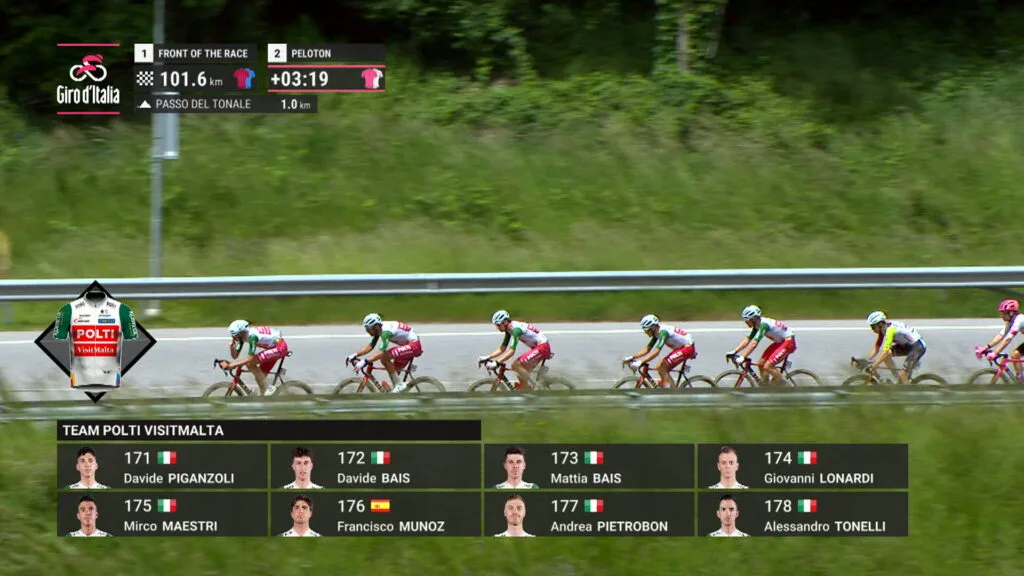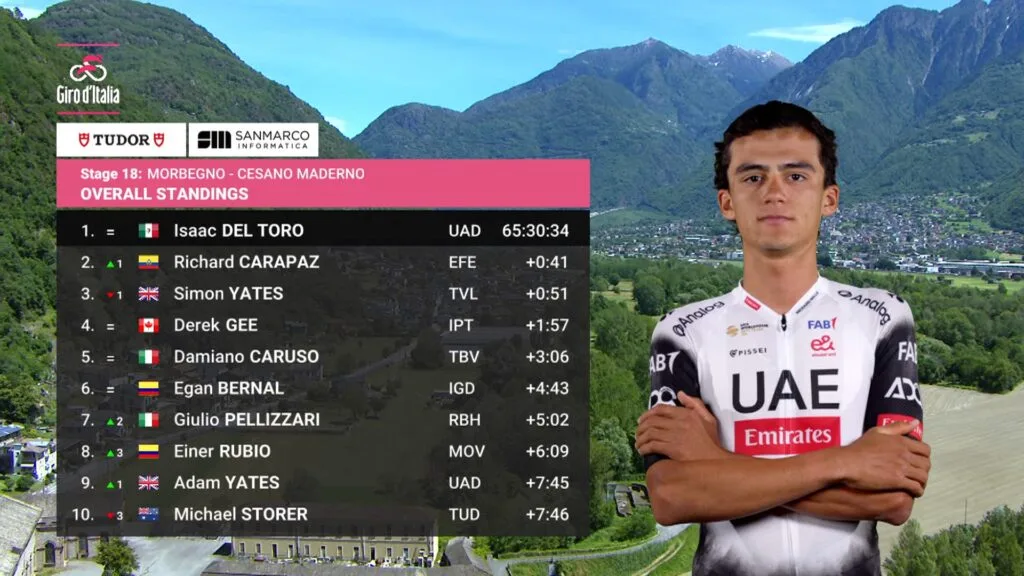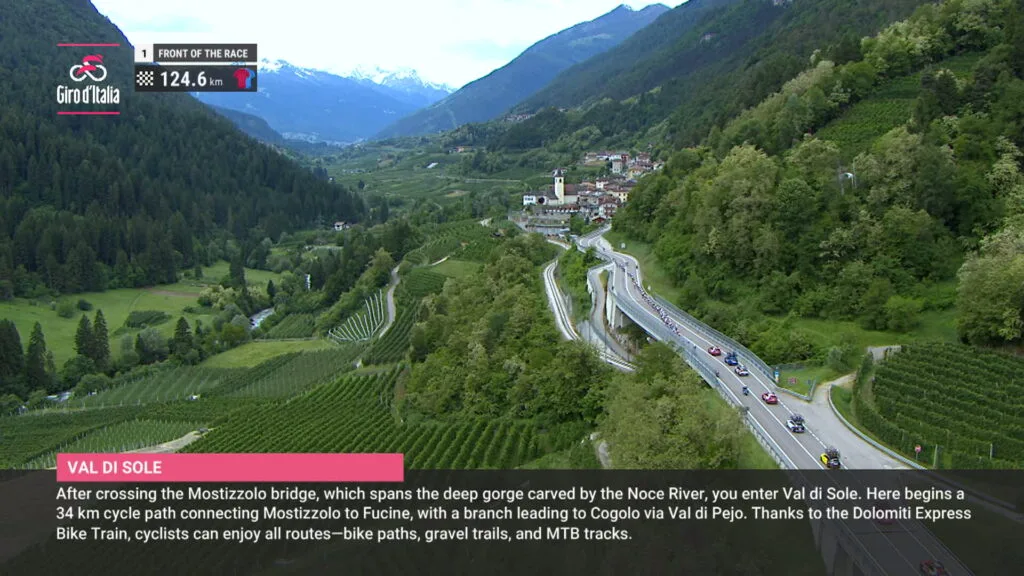Close
Interview with Alessandro Curti, Head of Graphics at EMG Italy
EMG Italy and RCS Sport have renewed their partnership for the production of the leading Italian cycling events, with a strong focus on technological innovation, editorial quality and integrated management. Giro d’Italia 2025 will feature advanced systems including live data-driven graphics, drones, artificial intelligence and pixel tracking.
More than 120 professionals are involved, along with a mobile production unit for the international feed and tailored streams for digital platforms. The aim is to deliver an increasingly immersive and technically refined television experience.
“Last year we implemented a number of new graphic solutions, and this year we’ve continued along the same path,” says Alessandro Curti, Head of Boost Graphics in Italy, the international broadcast graphics division of EMG / Gravity Media.
“This year’s project involved advanced technologies, new data collection systems, and a significant expansion of the features dedicated to the live television production of cycling’s flagship event, the Giro d’Italia.”

RCS Sport has entrusted EMG / Gravity Media Italy with the international production and distribution of its cycling events, while all graphics operations are managed by its subsidiary Boost Graphics.
This collaboration allows for early-season trials of new tools during events like the UAE Tour, Strade Bianche, Tirreno-Adriatico and Milano-Sanremo, which are then fully developed and deployed at the Giro. Other RCS races follow: Milano-Torino, Gran Piemonte and Il Lombardia. Since last year, new additions include Sanremo Women, Giro Donne and Giro Next Gen, expanding the calendar of covered events.
The Giro represents the culmination of all graphic innovations tested throughout the season.
Among the key developments this year are new solutions that highlight athlete data: in addition to biometric parameters (speed, cadence, power output in watts) previously limited to a few riders, the 2025 edition features a greatly expanded dataset.
Additional information such as weather conditions, cultural content and historical notes on each stage location have also been integrated, some of which are provided directly by the organiser through dedicated tools developed to enhance their graphic representation.

“For biometric data collection,” Curti explains, “we’ve developed a new system in collaboration with VELON, an external partner of RCS. The data are captured by sensors mounted on the bikes, transmitted via mobile networks using transponders, and sent to a central data hub. From there, the information is transferred via API and internet connection to the Boost Graphics operations centre, where it is processed in real time and provided to the main production director.”
Boost Graphics has also developed a custom application for collecting and managing this statistical data.
Almost every bike (within technical limits) is equipped with a transponder, and the transmitted data is processed to create athlete-specific biometric graphics, enabling dynamic comparisons between riders in breakaways, in the peloton or among general classification contenders.
All of this is integrated into the live graphic flow for the international feed. The transponder signals are first received by the VELON hub and then sent via mobile network (which can present challenges in mountainous terrain) to Boost’s graphics hub, where the system processes the data with minimal latency. Graphic operators select the most relevant content in line with the narrative choices of the live director. The data feed is continuous, but only pertinent elements are broadcast, using templates created during the off-season.

Live images are accompanied by informative graphics, from weather and biometric data to group composition and breakaway formations. A single graphics coordinator maintains direct contact with the director to ensure editorial consistency. Three Boost Graphics OB vans are stationed at each stage finish, staffed by personnel managing timing (in partnership with Microplus), intermediate sprints, stage results, secretariat tasks and photo finish.
“One of the key innovations in 2025,” adds Curti, “is the introduction of the ‘Red Bull kilometre’, a new intermediate sprint that required the development of dedicated and branded graphics. We’ve also expanded our technical infrastructure: six OB graphic vehicles in total—three at the finish and three along the course to manage the intermediate sprints. Two additional graphic workstations have been installed on one of the OB vans to reinforce operations.”

The intermediate sprint vans are responsible for collecting and transmitting the sprint standings in real time, including graphics and official statistics.
Personnel are distributed across three intermediate sprint positions, two photo finish stations, one secretariat, one for race radio, one for GPS, one for pixel tracking, and three operators for central graphics—for a total of 13 specialised roles.
The Pixel Tracking system, used exclusively on helicopter footage, allows real-time tracking of rider positions within the race, with dynamic on-screen labels showing name, bib number, and jersey type. One operator is dedicated to this task, and the footage is also used in post-production.
Finally, to integrate with RAI’s graphics, EMG / Gravity Media Italy has assigned a dedicated operator and equipment within RAI’s OB van, ensuring unified and consistent graphic management throughout the race.
“It’s a complex but cohesive team effort,” concludes Curti, “and I would like to thank Antonello Grippo, Cycling Project Manager, in particular. The result is a graphic system that is richer, more precise and more dynamic—one we’re especially proud of, as it truly serves the television storytelling of the Giro d’Italia.”
To provide the best experiences, we use technologies like cookies to store and/or access device information. Consenting to these technologies will allow us to process data such as browsing behavior or unique IDs on this site. Not consenting or withdrawing consent, may adversely affect certain features and functions. For more information, please see our Privacy Policy.